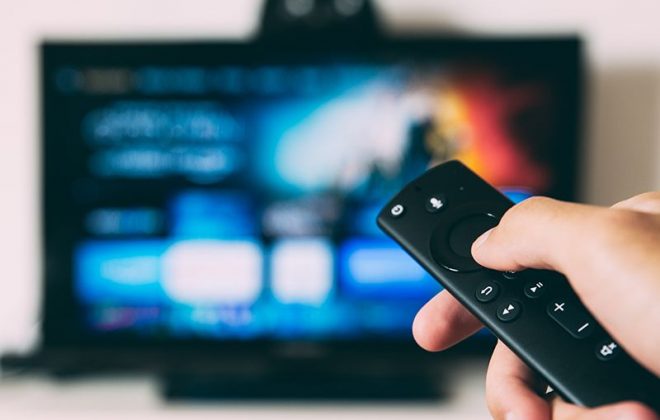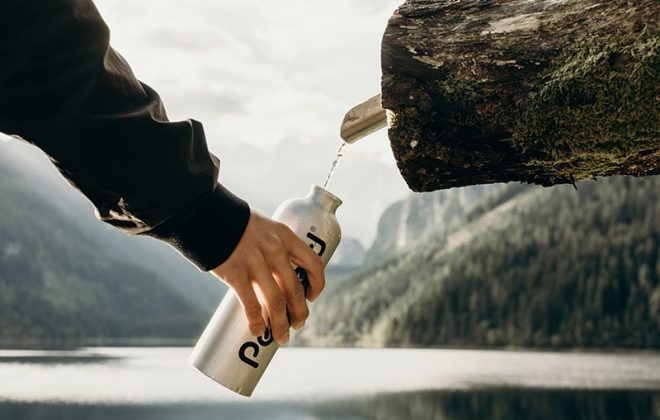What Is Nutrient Density And Why It’s More Important Than Caloric Content
In the fitness world many believe athlete’s diet is all about eating as much as possible to fuel intense training. That all what really matters is how much protein, carbs or fat you eat. Only a handful of individuals consider what they put in their bodies and how much nutrient density their meals contain.
Indeed, on average athletes eat more than a typical person. But it’s not about the quantity – a healthy diet for athletes means more quality ingredients, not necessarily eating more. If we put junk in our system, it stresses the body more than it benefits.
This topic is close to my heart, as poor nutrition choices have been holding me back for a long time. I was snacking a lot instead of eating well-balanced meals. A burger menu was almost a ritual after a day of competition. And I’m still a big fan of sweets and cakes, which I did learn to control. But a move to endurance training was what really changed my relationship with food.
I was recently interviewed on the topic of nutrition, healthy eating habits and how those evolved for me as an athlete, which I found to be interesting and relevant. So, I’m sharing it on my blog as well.
How to eat more healthy
Question: In your experience, what have been some of the biggest challenges people who are trying to eat healthy face today? Any thoughts on what is causing this?
Nutrition is a very broad area and there are hundreds of small things we all can do better. As I see it, most of the challenges people face today fall into one of the two categories – TMI (too much information) or lack of discipline. Not taking medical conditions into account.
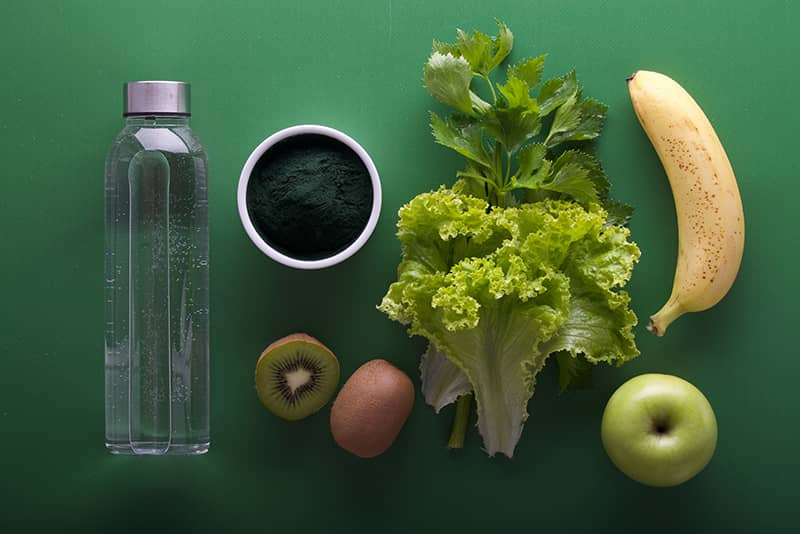
There’s a lot of advice out there on how to eat more healthy and much of it will indeed make people look & feel better. Drink more water, eat more greens, go gentle on the sugar and so on. Some of the topics experts do agree on, while others are more controversial. Such topics spark intense debates and can even create doubts which tend to be amplified by the media. So, what often happens is all of this (sometimes conflicting) information gets overwhelming and leads to no decision. And such indecisiveness means people keep their unhealthy habits.
I used to be right there – overwhelmed by the amount of small details that affect the body. Which is why I always postponed looking into it until ‘I have the time to study the facts’.
Practice makes perfect
On the other side, I noticed that many people lack consistency in their lifestyle – both in training and nutrition. They tend to look for the winning strategy without giving enough daily effort to follow their existing plan.
Real and sustainable results come from daily work that requires discipline and consistent good habits – not 3 days per week, not when we’re feeling like it, but every day. And that’s true for any area – nutrition, training, business or even relationships.
My advice would be to not waste time on looking for a perfect diet or the right strategy. Start somewhere and build healthy eating habits one by one. After all, we all know the basics – eat less processed foods, fill half the plate with greens, drink more water.
Just begin and refine the approach later. It’s easier to steer a ship that’s already moving.
Healthy eating habits
Question: Any best-practice advice on how to overcome some of these challenges?
In my view, the best and most sustainable way to live and eat healthy is to think bigger. Forget about the process for a moment and think of the vision instead.
When we diet and restrict ourselves we think of what we’re giving up and are, therefore, less likely to stick to our plan. A much better strategy is to craft a powerful WHY we’re doing something and fill the life with activities (and foods) we do enjoy. This way we’ll focus on who we are and what we get to do when we’re healthy.
For example, I like to think about nutrition as not that I give up unhealthy foods & substances (fried, junk, processed, alcohol, etc.), but about what powerful effect good food will have on my body. Better sleep, faster recovery, more energy, improved mood & fitness.
In practice, I am a big believer in habits. If we want to change the quality of our lives we have to raise the standard of our lifestyle. In particular, addressing poor nutrition habits one by one and adding good foods gradually. Starting with those that are easy to incorporate into daily routine. This will trigger a snowball effect across all areas of life and will have a massive effect on overall well-being.
It’s also a great way to overcome the ‘informational overwhelm’ and learn those small nutritional details one by one.
Read also: 9 Strategies To Develop Good Habits And Make Them Stick
Nutrient density – not all calories are created equal
Question: How do you approach meal decisions in your diet? Are you looking for a certain macro breakdown? Does it depend on the time of day?
At the beginning of my journey I was very diligent in counting macros. I even planned my meals to ensure I’m sticking to a balanced split – 60% carbs, 20% fats and 20% protein. This has helped me understand the mechanism how food affects our body composition and energy levels.
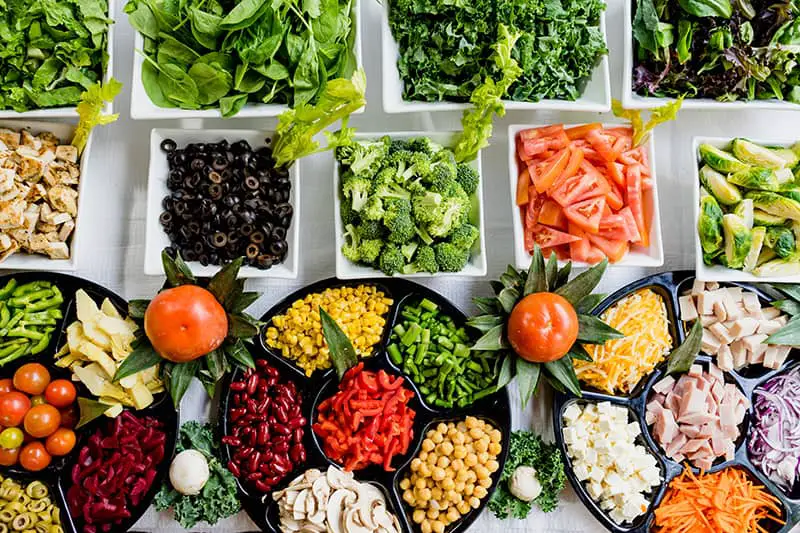
However, during my endurance training I understood that all calories are not created equal. For example, 500 calories at a fast food restaurant will not do any good for my recovery compared to 500 calories of a homemade meal made of high quality ingredients. I understood that replenishing energy is not the only thing that is required to recover from the training session. Among other things the body also needs to normalize hormonal balance and calm down the nervous system, which requires vitamins and minerals.
Over the years my priority in nutrition switched from ‘energy & size’ to ‘recovery’ and, ironically, that’s what improved my fitness the most. In particular, that includes:
- Selecting most nutritious meals to get as many micro nutrients (vitamins & minerals) as possible instead of focusing on macros (protein, fat and carbs).
- Consume foods that are not heavy (I don’t eat meat and usually consume small portions) to minimize extra stress on the digestive system.
This focus on nutrient density and simplicity helps me recover quicker, have fewer food cravings, get leaner, stronger and faster.
The plant-based diet
What helped me in adopting a nutrient-dense diet was transitioning to a more plant-based lifestyle and focusing my diet around vitamins and minerals. I started to notice that even after an intense session my body doesn’t need calories as much as it needs replenishing vitamin & mineral sources to help it run smoothly. Since there are more vitamins & minerals in unprocessed foods one thing I’m only looking for in my diet now is the amount of fiber.
Aside from nutrients, I pay close attention to food timing and tend to consume most of the food before or around lunchtime. That’s the time of the day when our body’s ability to digest food is at its highest (according to Circadian rhythms) and also when the energy spent on doing it will be utilized most effectively. I will typically have a lighter and early (when possible) dinner to maximize the quality of my sleep and get benefit from a longer overnight fast.
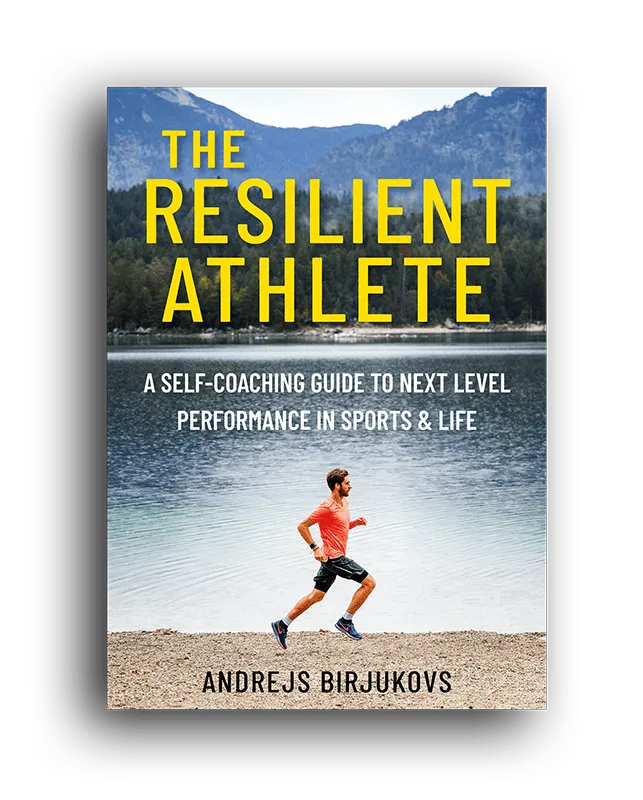
The Resilient Athlete
A Self-Coaching Guide to Next Level Performance in Sports & Life
Are you aiming to become a resilient athlete who is able to withstand any pressure? Be able to jump on any opportunity? Take any challenge life throws at you head on?
Then this book is for you.
Learn moreExamples of nutrient-dense foods
Nutrient-dense foods are those that contain larger amount of micronutrients (vitamins & minerals) per ‘portion’ size. Or per certain amount of calories. Many consider this as a measure of overall meal quality.
Below are some examples of nutrient dense foods:
- Greens – kale, spinach, broccoli, arugula
- Berries (fresh or frozen) – strawberries, blackberries, blueberries, goji
- Vegetables – asparagus, carrots, beets, avocados
- Whole grains – oats, rice, whole grain pasta
- Legumes – peas, beans, chickpeas, lentils
- Nuts and seeds – almonds, walnuts, flaxseed, chia seeds
What are low nutrient density foods?
I guess you get the picture by now.
Low nutrient density foods are those that don’t contain many micro nutrients and (especially carb-rich ones) are often referred to as ’empty calories’. While such foods provide energy, often they cause insulin spikes, which promotes food cravings and more stress for the body. Here are some of the low nutrient density foods:
- Processed food (like cereals, ready-made meals)
- Sugary foods (including sweets, cakes and even ‘liquid calories’ in soft drinks)
- Baked & fried goods (like pastries, donuts)
- Alcohol
Healthy diet for athletes
Question: How do you get a better understanding of your nutritional status? Do you get regular checks to better understand intake or the way your body metabolizes certain nutrients?
I am a technical person when it comes to optimization and I love data.
However, my main indicator for how nutrition affects me is my own body. Over 20+ years across various sports I learned to listen to how it responds not only to physical stress, but also to what I consume.
I keep a training diary and over the years I learned to recognize patterns (negative & positive) that certain foods have on me. I record how I feel and note down responses I want to incorporate into my life.
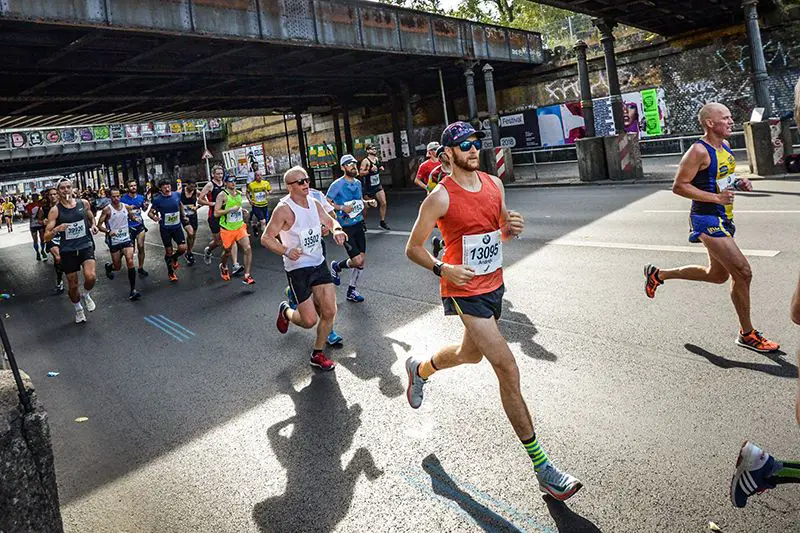
I rely on my physiological feelings more than I do on numbers. Even though I do annual blood checks at the end of the season to see how training load affects my body, my main source of feedback is my physical state.
I typically monitor resting heart rate, sleep, appetite, digestion and also notice any change in the way the body feels. In the periods of hard training I try to log all possible data, like how much I’ve slept and what I ate to optimize for the future.
So, when my body feels different (heavy and/or sore muscles, general tiredness, etc.) I always come back to my diary to see if there has been anything different that I did or ate.
My full-day nutrient-dense diet plan
Below are some of the nutrient-dense meals I typically have for breakfast, lunch, dinner (and/or snacks) as an endurance athlete.
Breakfast
My go-to breakfast is oatmeal (or overnight oats if I made those the night before). It gets me through the morning at work or any training session.
To give it flavor and make it nutritious I add goji berries, cacao nibs, chopped dates & dried figs, chia seeds, cinnamon and almond milk. Mix it all together and enjoy.
Lunch
My favorite meal for lunch – be it after a training session or in the middle of the workday – is a Quinoa bowl (sometimes called Buddha bowl).
The recipe is simple – cook a cup of quinoa and put it in a bowl on a steamed kale or fresh spinach. Add veggies on top (I prefer avocado, beets, onions, broccoli and carrots) sprinkle some nuts & seeds (i.e. pumpkin, hemp) and pour plenty of olive oil on top.
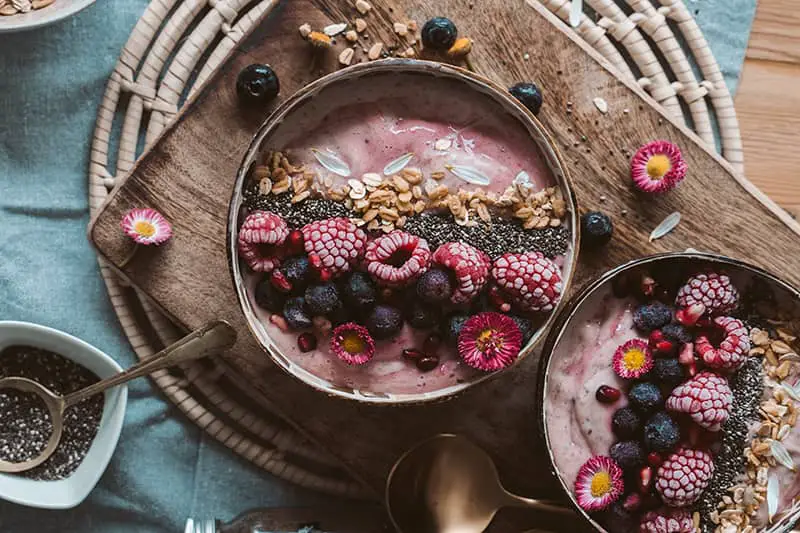
Snack
On a hot day nothing beats a homemade acai or a smoothie bowl for me. It’s cool, fresh, tasty and also very nutritious.
For the base – put frozen acai (if you have any), frozen blueberries, banana, almond milk and a teaspoon of maple syrup in a blender and blend until smooth. Once done, pour the smoothie in a bowl and add granola (musli), banana, fresh berries, coconut chips and some nuts (like cashew) on top.
Dinner
One recipe that I cook frequently is a traditional Indian lentil dahl. It’s essentially lentils cooked in coconut milk and water with lots of spices added to it (paprika, cumin, cinnamon, curry).
I like to cook spinach on a separate pan and eat the whole dish together with rice. Rice adds some amino acids that lentils don’t contain, which forms a complete protein. This is a dish that gives the body building blocks for muscle recovery, as well as replenishes glycogen stores after long or intense sessions.
Did you find this information useful? Share the post with others using the buttons below.
Have an opinion? Share via links below and tag @theathleteblog
Andrejs Birjukovs
GET A FREE TRAINING PLAN
Subscribe to my email list and get access to a free 4-week “back in shape” training plan
You’ll also get two full-body strength sessions and some other goodies!
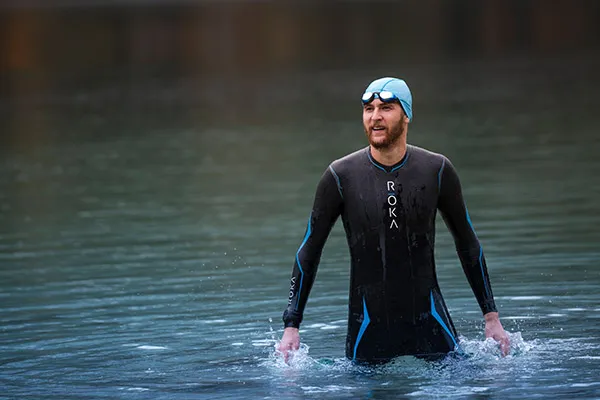
How did I get here?
Hey there! My name is Andrejs and I am here to inspire, entertain and get you fit for any adventure.
I went from being an over trained pro athlete to an endurance coach sharing how to listen to your body and live life to the fullest.
Traveling, new sports & activities brought new meaning to my training and made it much more effective, fun and enjoyable. And I'm here to help you do the same.
